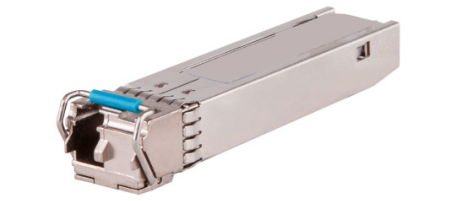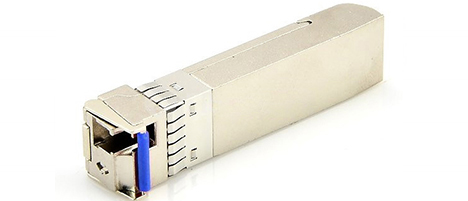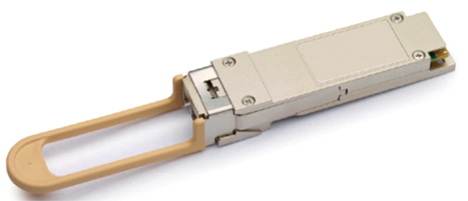What is a BIDI optical module?
2021-07-30 21:57 admin
At present, most optical modules on the market transmit data through two optical fibres. One fibre is used to receive data from the network device, and also the opposite fibre is used to transmit data to the network device. However, there is a variety of the optical module which can realize data transmission with only one optical fibre. this kind of optical module is BiDi.
1. Basic knowledge of BiDi optical module
BiDi (bidirectional) single-fibre bidirectional optical module is different from the two-port (TX transmitting end and RX receiving port) optical module, it's only one fibre port, using WDM technology, sending and receiving different central wavelengths in two directions, So on realize optical fiber bidirectional transmission of optical signals.
2. regulation of BiDi optical module
The BiDi optical module is provided with a wavelength division multiplexing (WDM) coupler, also called a duplexer, which simultaneously completes the transmission of 1310nm optical signals and also the reception of 1550nm optical signals, or contrariwise. Therefore, to figure effectively, BiDi optical modules must be utilized in pairs. By adjusting the duplexer to match the wavelength required by the transmitter and receiver, the operating wavelengths of the 2 duplexers must be complementary and consistent. Suppose the paired BIDI optical modules are connected to plan A (upstream) and device B (downstream). therein case, the duplexer of the optical module requires a receiving wavelength of 1550 nm and a sending wavelength of 1310 nm. The duplexer of visual module B must have a receiving wavelength of 1310nm and an emission wavelength of 1550nm.
3.Classification of BiDi optical modules
It is usually utilized during a high-performance integrated duplex circuit through one optical fiber. The speed is 144M-4.25Gbps. Does BiDi SFP optical module have different wavelength modes at different distances? it's true. When the transmission distance is above 40km, the wavelength scheme of the BiDi SFP optical module is 1550nm/1490nm, when the transmission distance is a smaller amount than 40km, the wavelength scheme of the BiDi SFP optical module is 1310nm/1550nm, 1310nm/1490nm;
 BiDi SFP+ optical module
BiDi SFP+ optical module
BiDi SFP+ optical module is an enhanced SFP optical module. It's employed within the two-way 10G serial communication of 1330/1270nm transmitter and 1270/1330nm receiver, with a maximum transmission distance of 60KM.

BiDi XFP optical module is an optical module encapsulated by XFP MSA. Compared with other optical modules, it mainly contains a built-in digital diagnostic function. Its receiving wavelength and emission wavelengths are 1270nm/1330nm and 1330nm/1270nm. It's generally used together with strip SMF, and also the utmost transmission distance can reach 10km. Additionally, the ability consumption of the BiDi XFP optical module may be a smaller amount than 2W, which is used in 10G Ethernet. BIDI X2 optical module.
BiDi X2 optical module
BiDi X2 optical module is used in two-way 10G serial communication, and this optical module consists of two parts: the transmitter part uses 1330/1270nm DFB laser. The receiver part uses an integrated 1270/1330nm pre-amplifier and post-amplifier.
BiDi QSFP+SR4 optical module

40G QSFP+ BiDi SR4 only needs two 20G channels to achieve 40G transmission. Each channel can transmit and receive signals from a multi-mode cable, but it should even be noted that 40G QSFP+ BiDi SR4 must use in pairs.

40G QSFP+ BiDi SR4 first combines four electrical signals with two 20G electrical signals, exchanges two 20G electrical signals into two 20G optical signals of varied wavelengths. It transmits 20G optical signals of multiple wavelengths to an optical cable, and so 40G. The device receives the optical signal and works.
The commonly used wavelengths of 40G QSFP+ BiDi SR4 optical modules are 850nm and 900nm, which can be used for stable transmission in multi-mode fiber systems. Additionally, the transmission distance using OM3 patch cords is 100m, and also the transmission distance using OM4 patch cords is 150m.
4. BiDi optical module and ordinary bidirectional fibre module
1. The single-fibre bidirectional optical module adopts WDM technology, and thus the dual-fibre bidirectional optical module isn't used;
2. Single-fiber bidirectional optical modules must be utilized in pairs, while dual-fibre bidirectional optical modules don't seem to be required;
3. The structure of the single-fibre bidirectional optical module is more complicated than that of the dual-fibre bidirectional optical module, and a splitter/combiner must be introduced on the optical module;
4. The difference between a single-fibre bidirectional optical module and a dual-fibre bidirectional optical module is that the previous requires only 1 fibre while the latter requires two.

In terms of price, single-fiber BiDi optical modules are beyond dual-fibre BiDi, but single-fibre BiDi saves fibre resources and should be a more good choice for users with insufficient fibre resources. The single-fibre BiDi optical module structure is more complicated than that of the regular dual-fibre bidirectional fibre module. Therefore the optical splitter and combiner need to be introduced on the optical module.
Dual-fiber optical modules haven't got to be paired. Any two optical modules are often connected. the worth is cheaper than single-fiber BIDI optical modules, but yet one more glass fiber is required. If the fibre resources are sufficient, you'll choose dual-fibre optical modules.
Dual-fiber optical modules haven't got to be paired. Any two optical modules are often connected. the worth is cheaper than single-fiber BIDI optical modules, but yet one more glass fiber is required. If the fibre resources are sufficient, you'll choose dual-fibre optical modules.